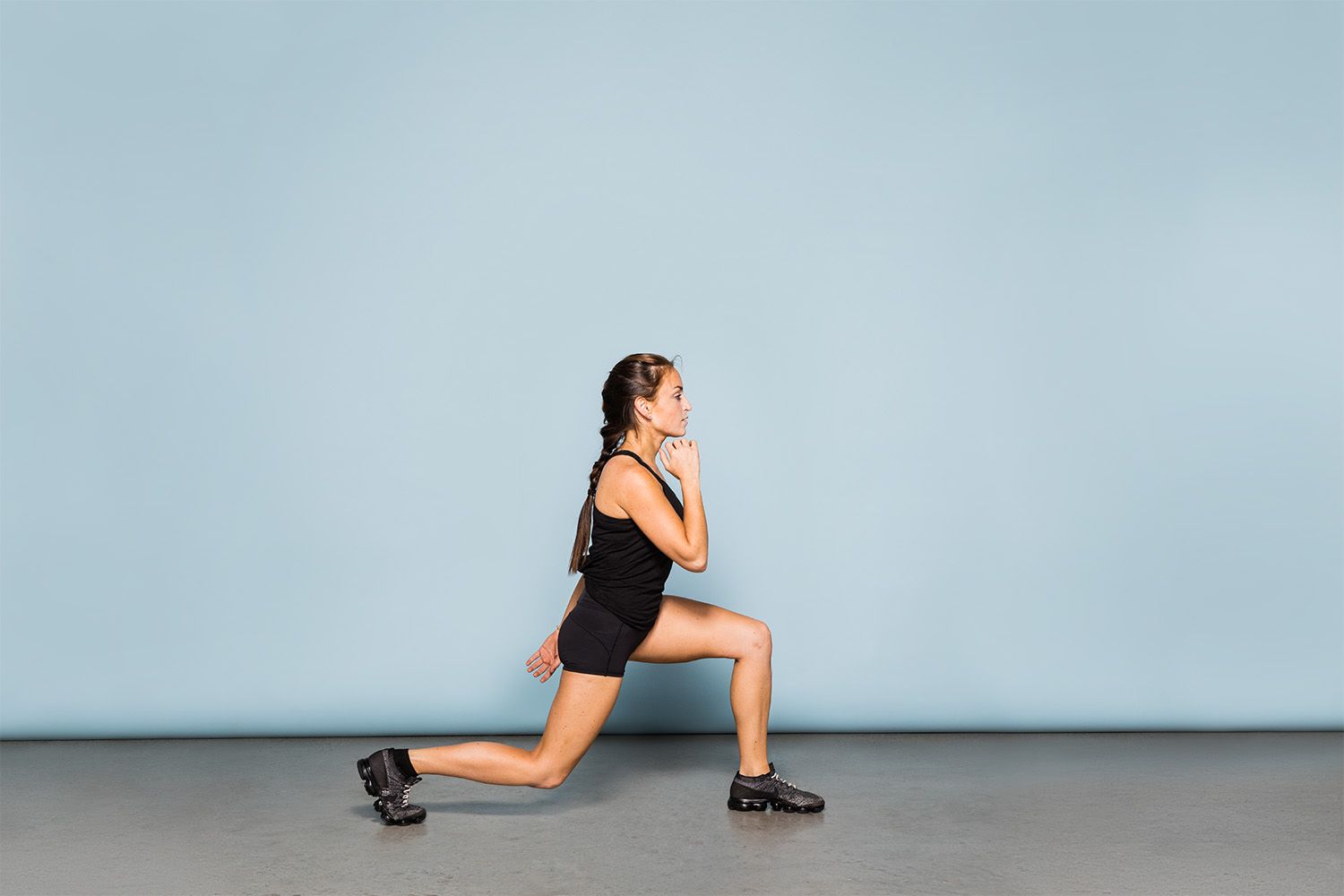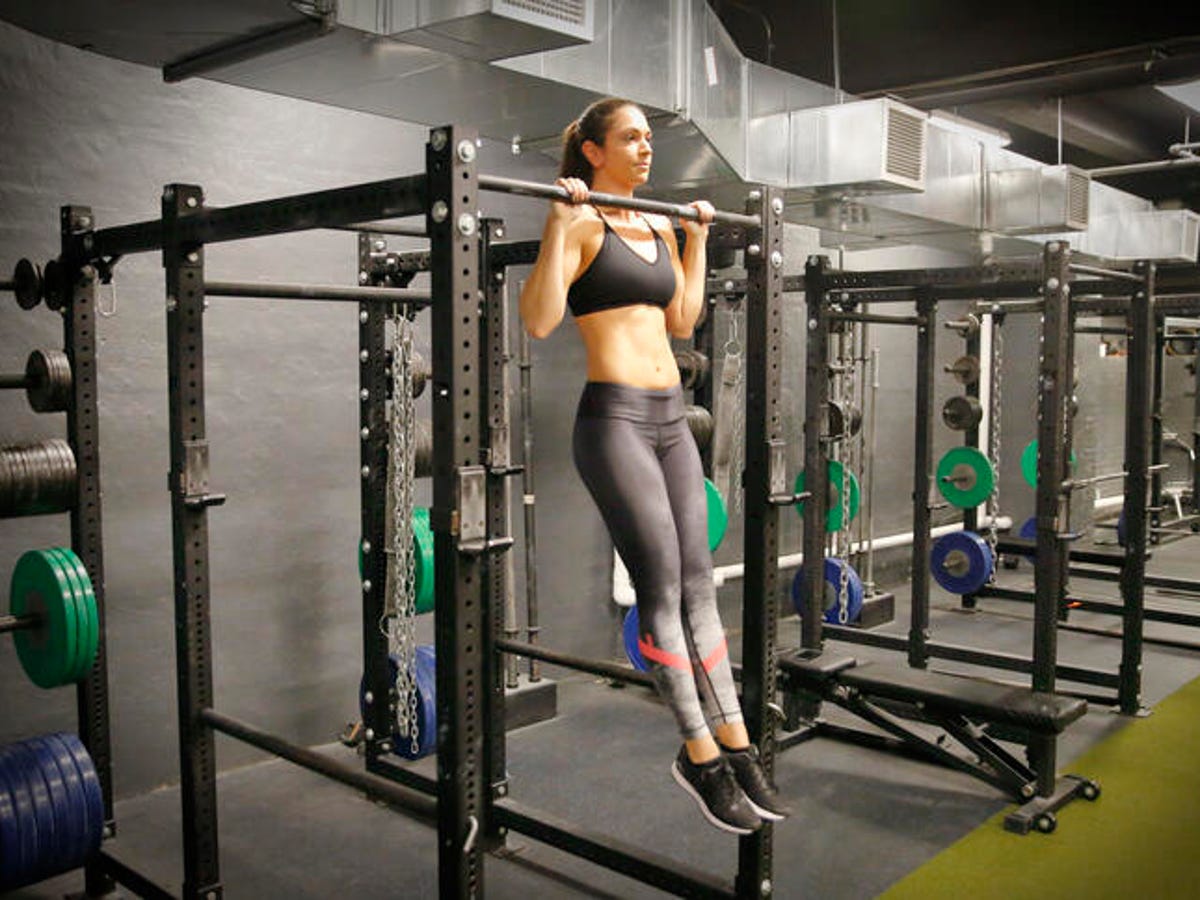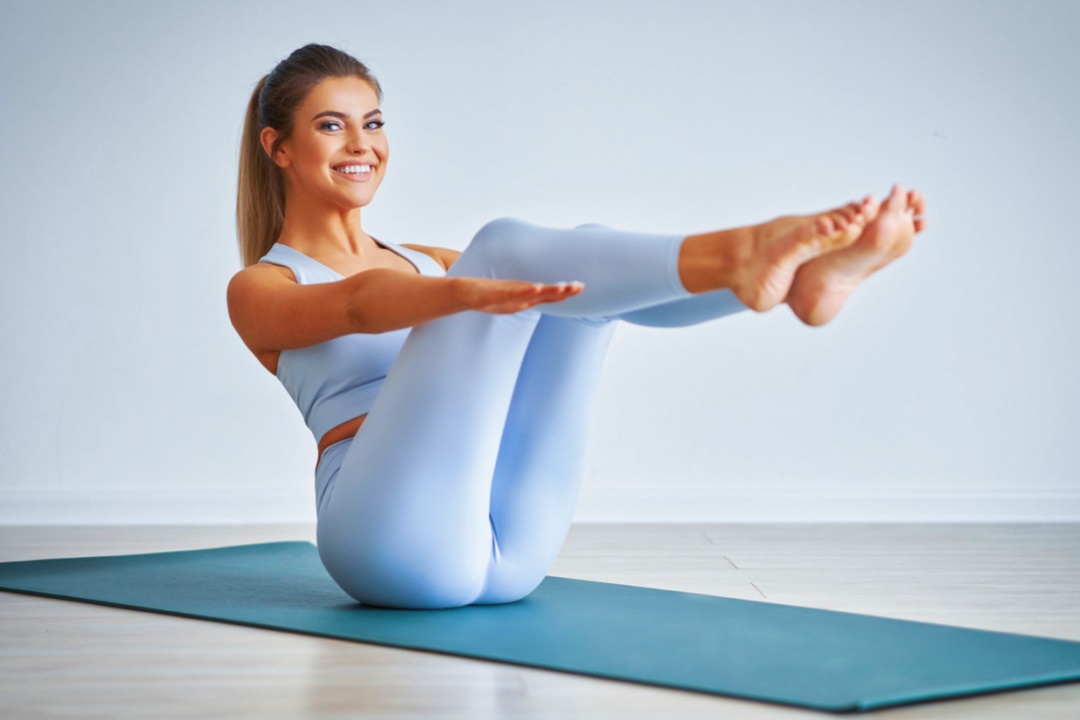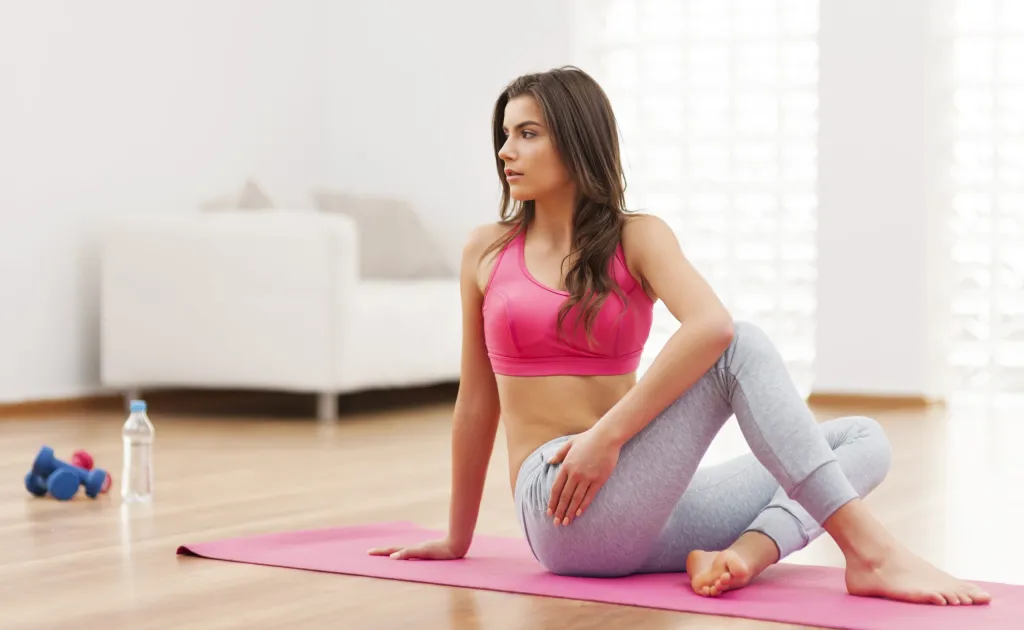Furthermore, lunges are a functional exercise, replicating movements commonly encountered in daily life. This functional aspect helps improve mobility and flexibility. The dynamic nature of lunges also stimulates the cardiovascular system, providing a cardiovascular benefit in addition to strength training.
For women who may be looking to tone and shape the lower body, lunges are particularly effective in targeting and sculpting the muscles of the hips, thighs, and buttocks. Overall, the versatility, functional aspects, and comprehensive lower body engagement make lunges an excellent exercise for women, promoting strength, balance, and overall fitness. As with any exercise, proper form and gradual progression are key to maximizing benefits and minimizing the risk of injury.

3. Deadlifts
Deadlifts are often considered one of the best exercises for women due to their wide range of benefits that contribute to overall strength, muscle development, and functional fitness. Here are several reasons why deadlifts are highly regarded for women:
- Full Body Engagement:
- Deadlifts work multiple muscle groups simultaneously, engaging the entire posterior chain, including the lower back, glutes, hamstrings, and calves. This results in a comprehensive and efficient full-body workout.
- Strength Building:
- Deadlifts are a compound movement that allows women to lift heavy weights, promoting the development of overall strength. This is beneficial not only for daily activities but also for maintaining bone density, which is particularly important for women’s health.
- Core Stability:
- Deadlifts require substantial core stability to support the spine during the lifting motion. This contributes to improved core strength and helps with posture and lower back health.
- Functional Movement:
- The deadlift mimics a fundamental human movement—picking something up from the ground. This makes it a highly functional exercise with direct applicability to daily activities.
- Metabolic Boost:
- Because deadlifts involve large muscle groups, they can lead to an increased metabolic rate and calorie burn. This can be beneficial for weight management and fat loss.
- Improved Posture:
- Deadlifts strengthen the muscles responsible for maintaining an upright posture. This can be particularly beneficial for women who spend long hours sitting or have concerns about postural issues.
- Hormonal Benefits:
- Compound exercises like deadlifts have been shown to stimulate the release of growth hormone and testosterone, which can contribute to muscle growth and overall well-being.
- Versatility:
- Deadlifts can be adapted to various fitness levels and goals. Whether using a barbell, dumbbells, or kettlebells, there are different deadlift variations that can suit individual preferences and abilities.
- Injury Prevention:
- Properly executed deadlifts can help strengthen the muscles and connective tissues around the spine, potentially reducing the risk of lower back injuries.
- Muscle Toning:
- Deadlifts target the muscles of the lower body, including the glutes and hamstrings, contributing to muscle toning and shaping.

4. Push-ups
Push-ups are often considered one of the best exercises for women due to their simplicity, effectiveness, and the wide range of benefits they offer. Here are several reasons why push-ups are highly regarded:
- Upper Body Strength:
- Push-ups primarily target the muscles of the chest, shoulders, and triceps. Developing strength in these areas contributes to improved upper body strength, essential for daily activities.
- Core Engagement:
- Push-ups engage the core muscles, including the abdominals and lower back. This not only strengthens the core but also helps improve overall stability and posture.
- Versatility:
- Push-ups can be performed anywhere without the need for equipment, making them a convenient and versatile exercise that can be incorporated into any fitness routine.
- Scalability:
- Push-ups can be adapted to different fitness levels. Beginners can start with modified versions, such as knee push-ups, and progress to full push-ups as strength increases.
- Functional Movement:
- The pushing motion involved in push-ups mimics many daily activities, such as pushing doors or lifting objects. This makes push-ups a functional exercise with real-world applicability.
- Improved Bone Health:
- Weight-bearing exercises, like push-ups, can contribute to improved bone density, which is particularly important for women, as they are more susceptible to osteoporosis.
- Cardiovascular Benefits:
- Performing a series of push-ups in quick succession can elevate the heart rate, providing cardiovascular benefits and contributing to overall fitness.
- Efficiency:
- Push-ups work multiple muscle groups simultaneously, making them a time-efficient exercise for busy schedules.
- Enhanced Joint Health:
- Push-ups require the use of various joints, promoting joint health and flexibility when performed with proper form.
- Muscle Tone and Definition:
- Regularly incorporating push-ups into a fitness routine can lead to improved muscle tone and definition, particularly in the chest, shoulders, and arms.
- Low Risk of Injury:
- When performed with proper form, push-ups have a lower risk of injury compared to some other upper body exercises. They are generally joint-friendly and can be suitable for individuals with certain physical limitations.
:max_bytes(150000):strip_icc()/health-benefits-of-pushups-GettyImages-498315681-7008d40842444270868c88b516496884.jpg)
5. Pull-ups
Pull-ups are considered one of the best exercises for women because they offer a range of benefits that contribute to overall strength, muscle development, and functional fitness. Here are several reasons why pull-ups are highly regarded:
- Upper Body Strength:
- Pull-ups primarily target the muscles of the upper back, including the latissimus dorsi, rhomboids, and trapezius. Developing strength in these areas enhances overall upper body strength, which is valuable for various daily activities.
- Shoulder and Arm Development:
- Pull-ups engage the shoulders, biceps, and forearms, contributing to well-rounded upper body muscle development and definition.
- Core Engagement:
- Performing pull-ups requires core stabilization, engaging the abdominal muscles. This contributes to improved core strength and stability.
- Functional Movement:
- The pulling motion involved in pull-ups is a functional movement that mimics activities like lifting and carrying. This makes pull-ups a practical exercise with real-world applicability.
- Versatility:
- Pull-ups can be performed with minimal equipment, such as a pull-up bar, making them a versatile exercise that can be incorporated into various fitness routines.
- Scalability:
- Like push-ups, pull-ups can be adapted to different fitness levels. Beginners can use assistance, such as resistance bands, to gradually build strength and progress to unassisted pull-ups.
- Improved Grip Strength:
- Pull-ups require a strong grip, contributing to improved grip strength. This can be beneficial for daily activities and other forms of exercise.
- Caloric Burn and Metabolic Boost:
- Pull-ups engage multiple large muscle groups, leading to a higher caloric burn and an increased metabolic rate. This can be advantageous for weight management and fat loss.
- Joint Health:
- Pull-ups involve a full range of motion in the shoulder joints, promoting joint health and flexibility when performed with proper form.
- Empowerment and Mental Toughness:
- Achieving the ability to perform pull-ups can instill a sense of empowerment and mental toughness. Overcoming the challenge of pull-ups can boost confidence and motivation.

6. Plank
Planks are considered one of the best exercises for women due to their effectiveness in targeting multiple muscle groups and providing a range of benefits for core strength, stability, and overall fitness. Here are several reasons why planks are highly regarded:
- Core Engagement:
- Planks primarily target the core muscles, including the rectus abdominis, transverse abdominis, obliques, and lower back. This leads to improved core strength, which is crucial for stability and everyday movements.
- Full-Body Activation:
- Planks engage not only the core but also muscles in the shoulders, arms, and legs. This full-body activation makes planks an efficient exercise for overall muscle engagement and development.
- Improved Posture:
- Strengthening the core muscles through planks contributes to better posture. Good posture is essential for preventing back pain and maintaining spinal health.
- Reduced Risk of Back Pain:
- A strong core, developed through plank exercises, provides better support for the spine, reducing the risk of lower back pain.
- Versatility:
- Planks can be modified to suit different fitness levels. Beginners can start with forearm planks or knee planks and progress to full planks as strength increases.
- Functional Movement:
- Planks mimic the position of maintaining a strong, neutral spine, which is important for many daily activities. This functional aspect enhances the transfer of strength gains to real-world movements.
- Low-Impact:
- Planks are a low-impact exercise, making them joint-friendly and suitable for individuals with joint concerns or injuries.
- Increased Flexibility:
- Holding the plank position requires flexibility in the shoulders, hamstrings, and even the arches of the feet. Regular practice can contribute to improved flexibility over time.
- Balance and Stability:
- Planks challenge balance and stability, encouraging the activation of stabilizing muscles throughout the body. This can be particularly beneficial for women in promoting overall functional fitness.
- Variety of Plank Variations:
- Planks can be modified and varied to add challenge and target different muscle groups. Side planks, plank jacks, and mountain climbers are examples of plank variations that provide variety in a workout routine.
:max_bytes(150000):strip_icc()/low-plank-hold-b8a63da1ef844f00b6f6a21141ba1d87.jpg)
7. High Knees
High knees are considered a beneficial exercise for women due to several reasons that contribute to cardiovascular health, calorie burn, and overall fitness. Here are some key reasons why high knees are often recommended:
- Cardiovascular Fitness:
- High knees are a dynamic, high-intensity exercise that raises the heart rate quickly. This cardiovascular engagement makes them effective for improving cardiovascular fitness and endurance.
- Calorie Burn and Weight Management:
- High knees are a full-body exercise that engages multiple muscle groups simultaneously. This results in an increased calorie burn, making them a useful component of a weight management or fat loss program.
- Improved Leg Strength:
- The rapid lifting of the knees engages the muscles of the thighs, hamstrings, and calves. Over time, this can contribute to improved leg strength and muscle tone.
- Core Activation:
- Performing high knees requires stabilization through the core to lift the knees to hip height. This engages the abdominal muscles and contributes to core strength.
- Dynamic Movement:
- High knees involve a dynamic, coordinated movement that mimics running in place. This dynamic nature is beneficial for enhancing coordination and agility.
- Low Impact:
- High knees are a low-impact exercise, making them gentler on the joints compared to some high-intensity exercises. This can be particularly advantageous for individuals with joint concerns.
- Accessibility:
- High knees can be performed virtually anywhere with minimal space and no equipment. This accessibility makes them a convenient exercise for home workouts or when traveling.
- Warm-Up Exercise:
- High knees can serve as an effective warm-up exercise before more intense workouts. They help increase blood flow to the muscles and prepare the body for physical activity.
- Adaptable Intensity:
- The intensity of high knees can be adjusted based on fitness levels. Beginners can start with a slower pace and lower knee lift, gradually increasing speed and height as endurance improves.
- Variety in Workouts:
- High knees can be incorporated into various workout routines, providing variety and helping prevent workout boredom.

8. Yoga
Yoga is often considered one of the best forms of exercise for women due to its holistic approach to physical and mental well-being. Here are several reasons why yoga is highly regarded:
- Flexibility and Range of Motion:
- Yoga involves a variety of poses and stretches that promote flexibility and improve joint mobility. This can be particularly beneficial for women, as it helps prevent stiffness and enhances overall range of motion.
- Strength Building:
- Many yoga poses require participants to support their body weight, promoting the development of functional strength. This can contribute to improved muscle tone and stability.
- Core Engagement:
- A significant aspect of yoga is engaging the core muscles. This contributes to better posture, stability, and overall core strength.
- Stress Reduction:
- Yoga incorporates breath control and mindfulness, promoting relaxation and stress reduction. This aspect is especially valuable for women dealing with the daily demands of work, family, and other responsibilities.
- Mind-Body Connection:
- Yoga emphasizes the mind-body connection through the integration of breath, movement, and mindfulness. This can lead to increased self-awareness and a greater sense of well-being.
- Improved Balance and Coordination:
- Many yoga poses involve balancing on one leg or holding positions that challenge coordination. This can enhance overall balance and coordination, reducing the risk of falls and injuries.
- Adaptability to Different Fitness Levels:
- Yoga is adaptable to various fitness levels and can be modified to accommodate individual needs and abilities. This makes it accessible to women of all ages and fitness backgrounds.
- Prenatal and Postnatal Benefits:
- Yoga can be adapted for pregnant women, providing gentle and effective exercise during pregnancy. Additionally, postnatal yoga can aid in the recovery process and help women regain strength and flexibility after childbirth.
- Pelvic Floor Health:
- Certain yoga poses, particularly those focused on engaging the pelvic floor muscles, can contribute to better pelvic floor health. This is important for women’s overall well-being, especially during and after pregnancy.
- Pain Management:
- Regular practice of yoga has been associated with reduced pain and discomfort, particularly in conditions such as chronic lower back pain, arthritis, and menstrual cramps.
- Enhanced Respiratory Function:
- The emphasis on controlled breathing in yoga can improve respiratory function, promoting better lung capacity and overall respiratory health.
- Community and Support:
- Yoga classes often foster a sense of community and support. Connecting with others in a positive and non-competitive environment can contribute to a sense of belonging and motivation.

9. Cycling
Cycling is often considered one of the best exercises for women due to its numerous physical and mental health benefits. Here are several reasons why cycling is highly regarded for women’s fitness:
- Cardiovascular Health:
- Cycling is an excellent cardiovascular exercise that gets the heart rate up, promoting heart health and improving overall cardiovascular fitness.
- Weight Management:
- Cycling is an effective calorie-burning activity, making it beneficial for weight management and fat loss. It can contribute to a healthy body weight and body composition.
- Low-Impact:
- Cycling is a low-impact exercise, which means it’s gentle on the joints. This is particularly advantageous for women, as it reduces the risk of impact-related injuries compared to high-impact exercises like running.
- Leg Strength:
- Cycling engages the muscles in the legs, including the quadriceps, hamstrings, and calves. Regular cycling can lead to improved leg strength and muscle tone.
- Improved Endurance:
- Engaging in cycling regularly can enhance endurance levels, making everyday activities feel less strenuous and improving overall stamina.
- Joint Health:
- The smooth, cyclical motion of cycling is gentle on the joints, making it a suitable exercise for individuals with joint concerns or conditions such as arthritis.
- Convenience and Accessibility:
- Cycling can be easily incorporated into daily life, whether as a means of transportation or as a recreational activity. It’s a versatile exercise that can be done outdoors or indoors on a stationary bike.
- Mental Well-Being:
- Cycling has been associated with improved mental well-being, reduced stress levels, and enhanced mood. The combination of physical activity and being outdoors can have positive effects on mental health.
- Social Activity:
- Cycling can be a social activity when done with friends, family, or as part of a cycling group. This social aspect can provide motivation, support, and make the exercise more enjoyable.
- Variety of Intensity Levels:
- Cycling allows for a range of intensity levels, from leisurely rides to high-intensity interval training (HIIT). This versatility makes it suitable for individuals with different fitness levels and goals.
10. Triceps Dips
Tricep dips are considered a beneficial exercise for women for several reasons, as they target and strengthen the triceps, the muscles located at the back of the upper arms. Here are some reasons why tricep dips are often included in fitness routines:
- Isolation of Triceps:
- Tricep dips specifically target the triceps brachii muscle, helping to tone and strengthen the back of the arms. This can contribute to improved muscle definition.
- No Equipment Necessary:
- Tricep dips can be performed with minimal equipment, such as a sturdy bench or chair. This makes them a convenient and accessible exercise that can be done at home or in a variety of settings.
- Versatility:
- Tricep dips can be adapted to different fitness levels. Beginners can start with assisted variations, such as bent-knee dips, and progress to straight-legged dips as strength improves.
- Muscle Engagement:
- Tricep dips engage not only the triceps but also the muscles in the shoulders, chest, and upper back. This provides a comprehensive upper body workout.
- Improved Arm Strength:
- Strengthening the triceps contributes to overall arm strength, which is beneficial for various daily activities and functional movements.
- Core Activation:
- Performing tricep dips requires core stabilization, engaging the abdominal muscles. This contributes to improved core strength and stability.
- Low Impact:
- Tricep dips are a low-impact exercise, making them gentler on the joints compared to some high-impact activities. This can be particularly advantageous for individuals with joint concerns.
- No Special Skills Required:
- Tricep dips are a relatively straightforward exercise that doesn’t require complex movements or special skills. This makes them suitable for individuals of different fitness levels.
- Home or Gym Option:
- Tricep dips can be done at home using household furniture or in a gym setting with parallel bars or dip stations. This versatility allows for flexibility in workout locations.
- Functional Movement:
- Tricep dips mimic pushing movements that are commonly used in everyday activities, such as pushing open a door or getting up from a seated position. This functional aspect enhances the transfer of strength gains to real-world movements.




:max_bytes(150000):strip_icc()/health-benefits-of-pushups-GettyImages-498315681-7008d40842444270868c88b516496884.jpg)

:max_bytes(150000):strip_icc()/low-plank-hold-b8a63da1ef844f00b6f6a21141ba1d87.jpg)

